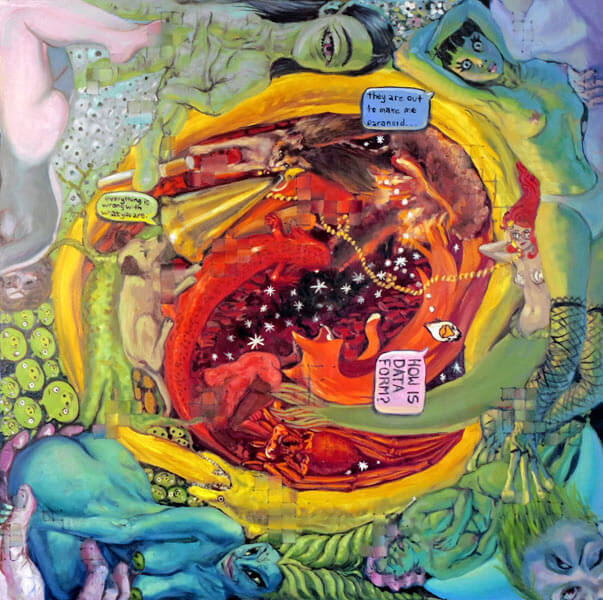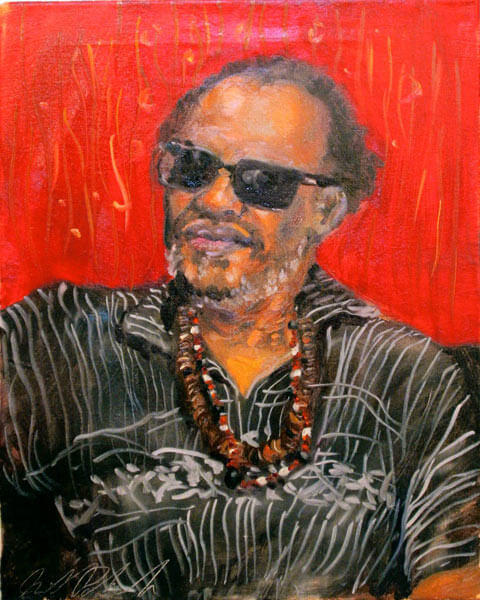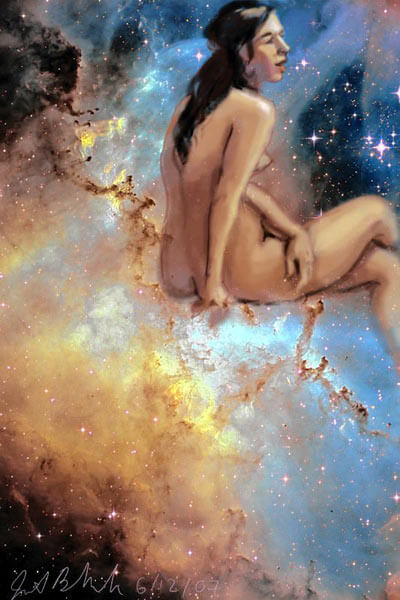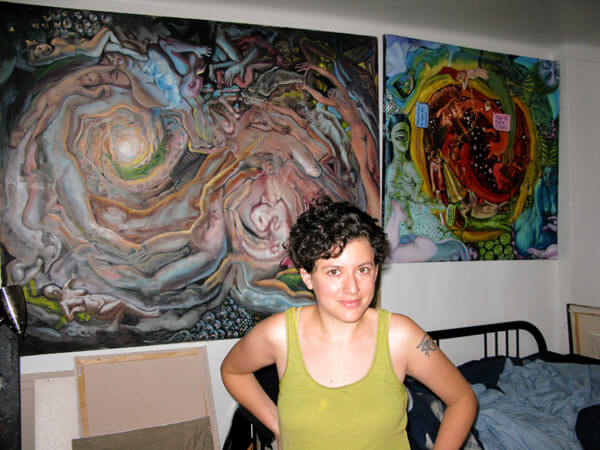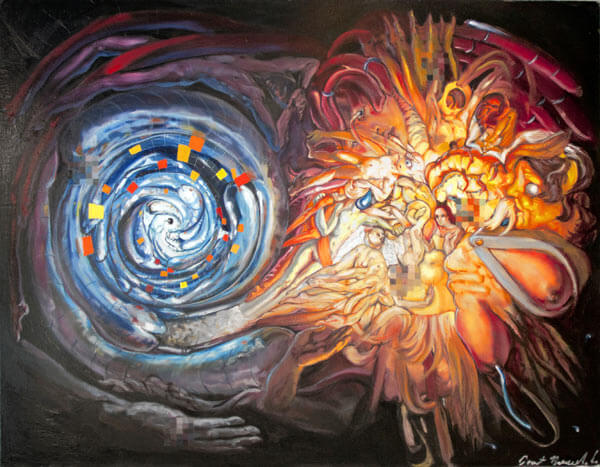By Allison Plitt
Raised in Southern California by parents who are both laser physicists, Forest Hills painter Janet Bruesselbach grew up surrounded by a world of science that serves as a pervasive theme throughout her artwork. While most artists refer to their pieces as “creations,” Bruesselbach discusses her work in more scientific terms such as “experiments” or “inventions.”
Even Bruesselbach admits to her unconventional view of art. “I have this weird kind of thinking in terms of optics and thinking of things objectively and experimentally — like seeing everything I do as an experiment that I don’t see a lot of other artists doing and I know that is because I always wanted to be in science a lot more actually,” she said.
Bruesselbach divides her artwork into three different categories. The first group is a series of works called “astrae,” in which Bruesselbach paints female models set against different backgrounds of celestial galaxies. Displaying her fascination with astronomy, she employed an inventive technique to create this type of artwork.
Bruesselbach designed each “astrae” piece using what she calls “digital painting.” Describing the process, she said “it started when I happened to have my laptop with me during a figure drawing class in high school. I opened a photo of a space nebula in Photoshop, put another layer on top of it and drew the model as if the nebula were a setting.”
Bruesselbach also conceded to a lifelong love of science fiction as seen by her second genre of paintings, in which bodies — be they human or alien — transform into various shapes. She said, “There’s this crazy stuff with the bodies morphing into each other, which is always sort of based on rules that I make. It’s like an algorithm, kind of like a process of giving myself a lot of invention, but, at the same time, keeping a firm structure in there. I’m actually trying to replace space with space in a way.”
Bruesselbach’s third category of artwork is portraiture, in which she employs her professional training in “traditional representative painting.” She holds a bachelor of fine arts in illustration from the Rhode Island School of Design and a master of fine arts in painting from the New York Academy of Art.
Rejecting the idea of painting a person from a photo, she prefers the human interaction that develops between herself and live models. “I know that my skills lie directly in working with a human subject and I know that all I want to paint is people,” Bruesselbach remarked. “Quite often with portraits you end up with parts of a person’s personality being revealed that you didn’t expect to.”
In the future, Bruesselbach hopes to do more portraits through a video chat technology she uses on her computer. Describing her portraiture via video chat as a “remote intimacy,” she said, “I am really interested in these sort of contradictions in the way we like to think how technology changes us or contradictions to how we think science works because I basically grew up on the Internet. I feel that connections that we make there are much more intimate and more emotional than those that I have in person.”
Another goal for Bruesselbach is to possibly become an artist representative or open a gallery focused on affordable art, which she says is a current movement in the art world. “I am a great believer in the middle classes being able to afford art,” she said.
From 2009 until 2011, Bruesselbach worked as a curator at a gallery on Manhattan’s Lower East Side called, “A Gathering of the Tribes.” Since the owner of the gallery, Steve Cannon, is blind, she needed to verbally describe each piece of artwork to him. As a result of this experience, Bruesselbach was inspired to work on her current venture which involves finding writers to depict artwork that artists will need to reproduce. By combining the efforts of both the writers and the painters, she intends to organize an art show to exhibit at various galleries.
“In taking Steve Cannon to art openings and describing the work to him, I realized how much effort was involved in really describing imagery, especially considering that many art reviews and press releases neglect to do this properly,” she said. “High art, for a few years, has been so conceptually oriented that it’s more about language and less about exploring the complicated relationships between the verbal and the visual.”
For more information about Janet Bruesselbach’s artwork and upcoming exhibits, you can visit her website at www.bruesselbach.com or email her at janet@bruesselbach.com.

